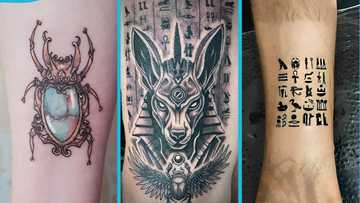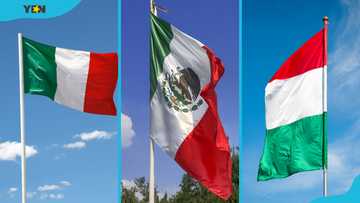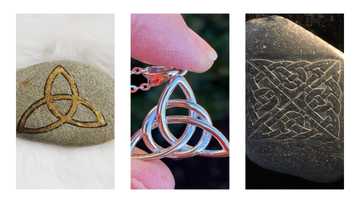30 unique traditional Japanese tattoo design ideas with deep meaning
Japanese tattoos are a timeless art form, deeply rooted in history and symbolism, often embodying cultural, spiritual, and intellectual themes. Whether depicting mythical creatures like dragons, serene landscapes, or legendary figures, each tattoo carries a unique story and significance.
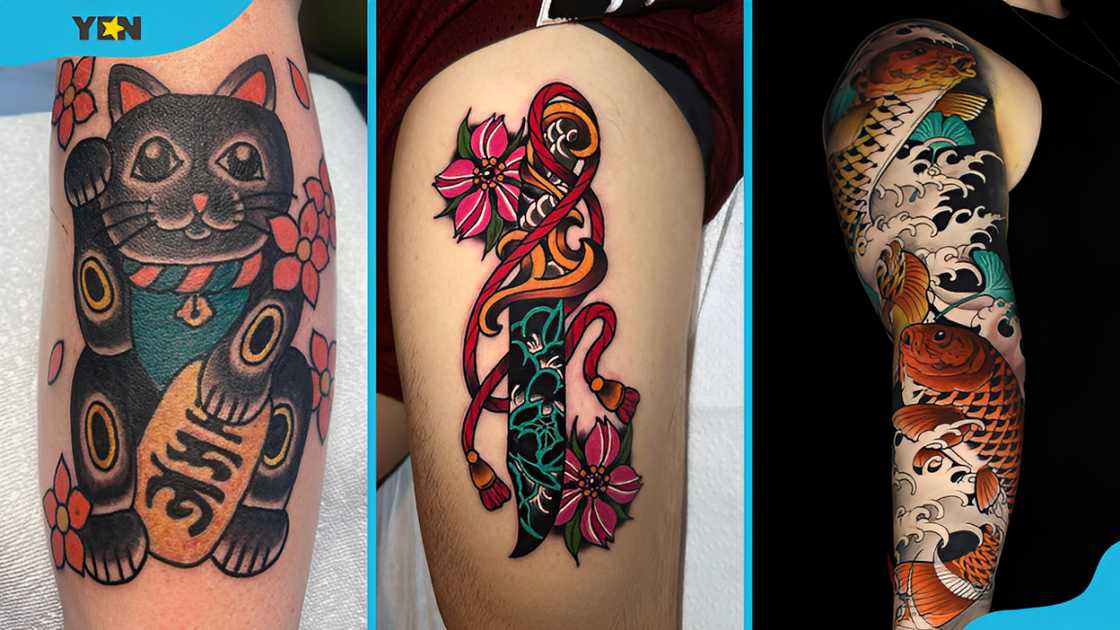
Source: UGC
TABLE OF CONTENTS
- Key takeaways
- Unique traditional Japanese tattoo ideas
- What is the most iconic Japanese tattoo?
Key takeaways
- Traditional Japanese tattoos are recognised for their elaborate designs, bold lines, and brilliant colours.
- Traditional Japanese tattoos are not only ornamental but also have profound cultural and spiritual significance.
- Cherry blossoms, koi fish, dragons, and other frequent designs all symbolise distinct values, virtues, or aspects of life.
Unique traditional Japanese tattoo ideas
Traditional Japanese tattoos are mesmerising works of art beyond ordinary ornamentation, depicting a rich tapestry of cultural symbolism, historical stories, and spiritual beliefs.
Traditional Japanese chest tattoos
Japanese chest tattoos are known for their detailed designs, deep symbolism, and historical relevance. They frequently use strong, flowing lines, brilliant colours, and themes from Japanese myths, traditions, and nature.
1. Tengu mask design
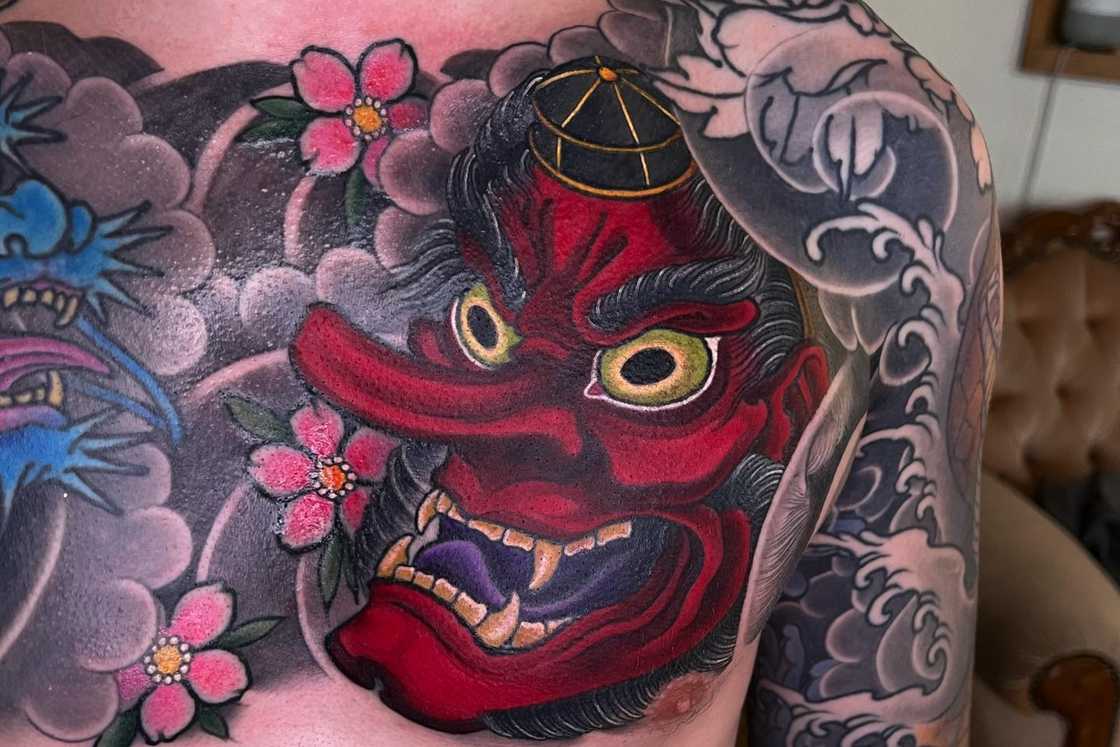
Source: Instagram
The traditional Japanese tengu mask tattoo has a multilayered meaning based on mythology and symbolism. Tengu are legendary monsters with long noses, scarlet faces, and, occasionally, wings. They are linked with both mischief and protection, representing a natural duality.
2. Symbolic rising sun
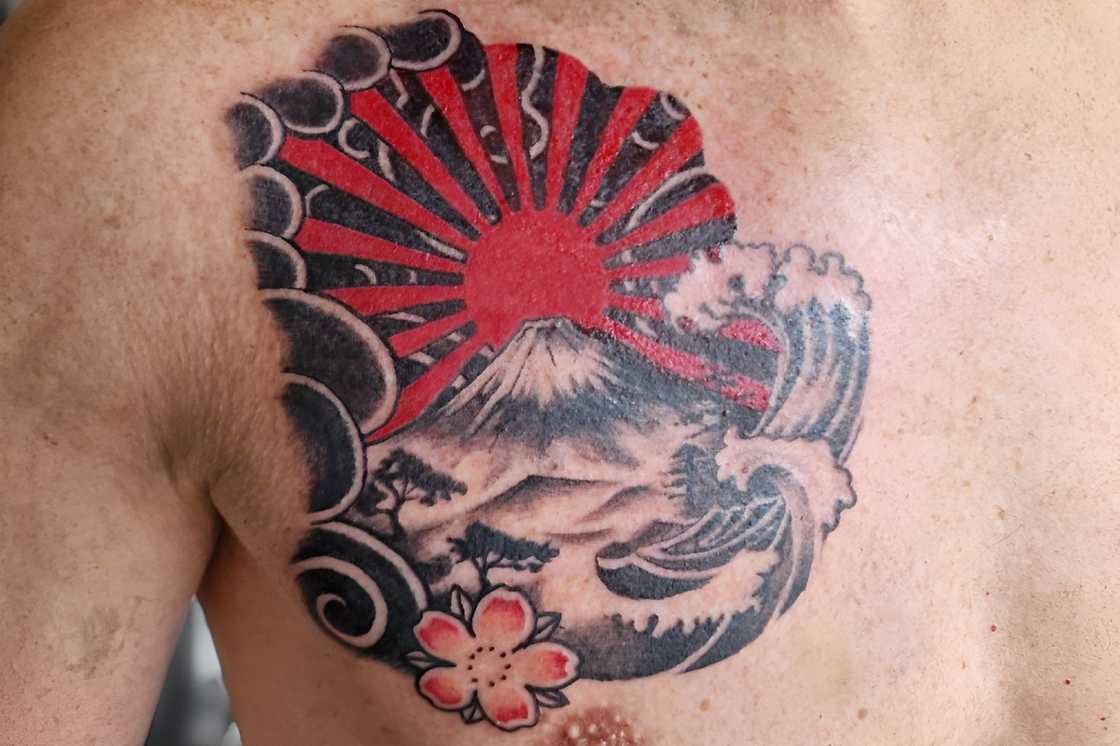
Source: Facebook
In Japan, the sun is considered the source of all life and is closely linked to the Shinto deity, Amaterasu. A sun tattoo can represent various good traits, including energy, vigour, and rejuvenation.
3. Snake motif for protection
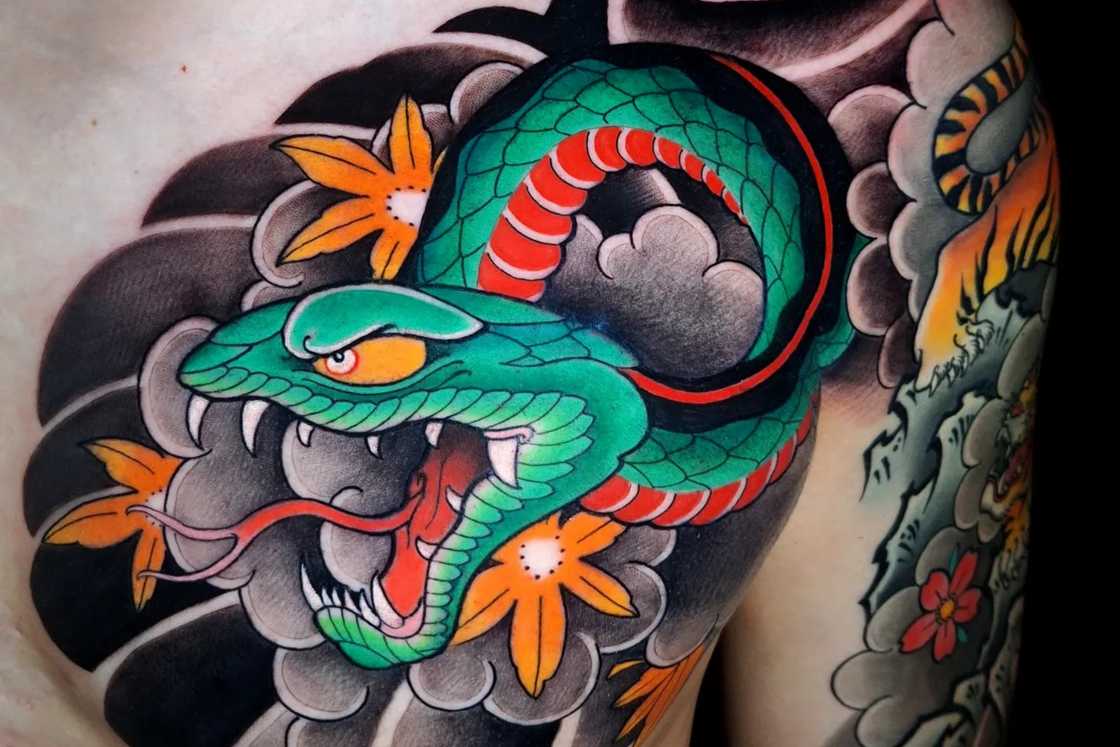
Source: Facebook
Snakes hold a lot of symbolic value in traditional Japanese tattooing. They frequently indicate protection, good fortune, and wisdom. Snakes are associated with change and healing because of their capacity to shed skin.
4. Foo dog guardian design
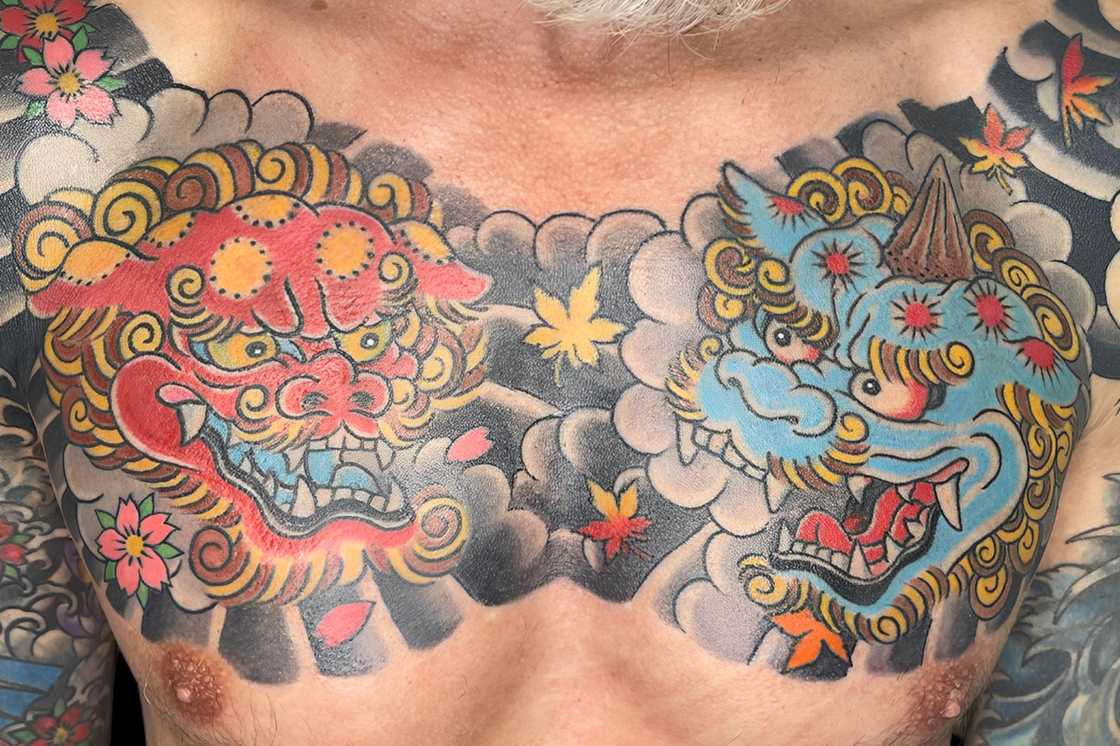
Source: Instagram
In traditional Japanese tattooing, the foo dog represents strength, courage, and protection from evil spirits. When worn on the chest area, the Karashishi operate as guardians, warding off misfortune and giving the wearer strength.
5. Maple leaves tattoo
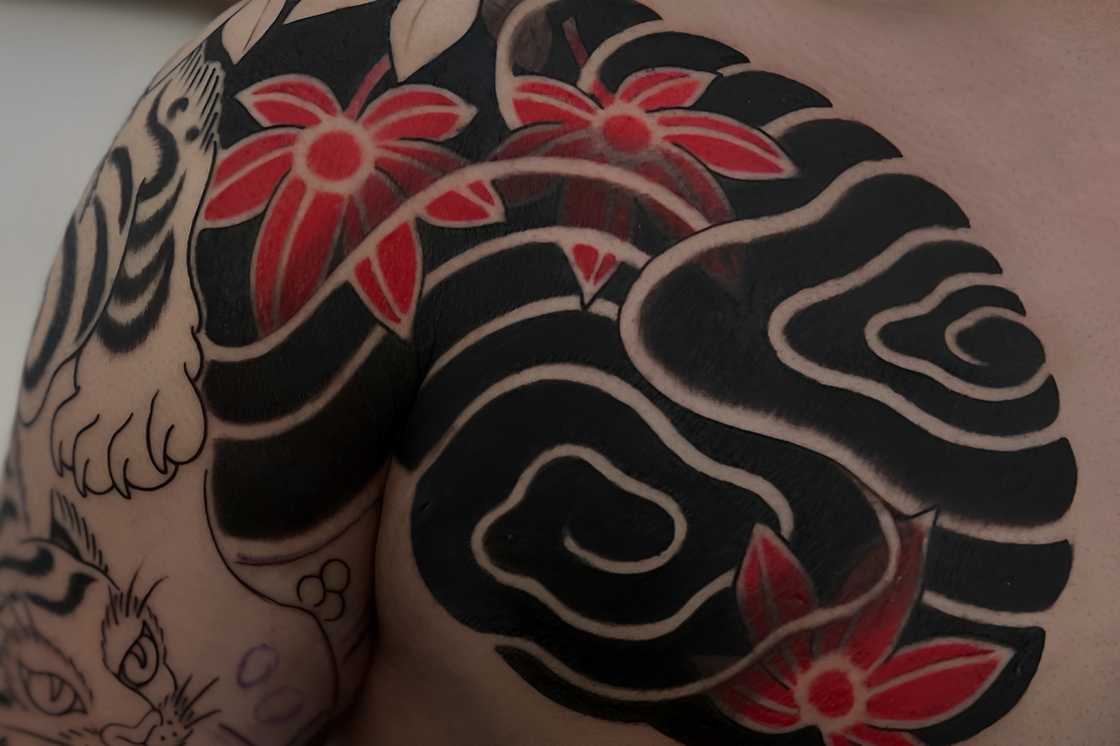
Source: Instagram
Maple leaves are symbolic in traditional Japanese tattooing, especially when applied on the chest. They symbolise the passing of time and the fleeting beauty of life, reflecting the changing seasons.
6. Oni mask emblem
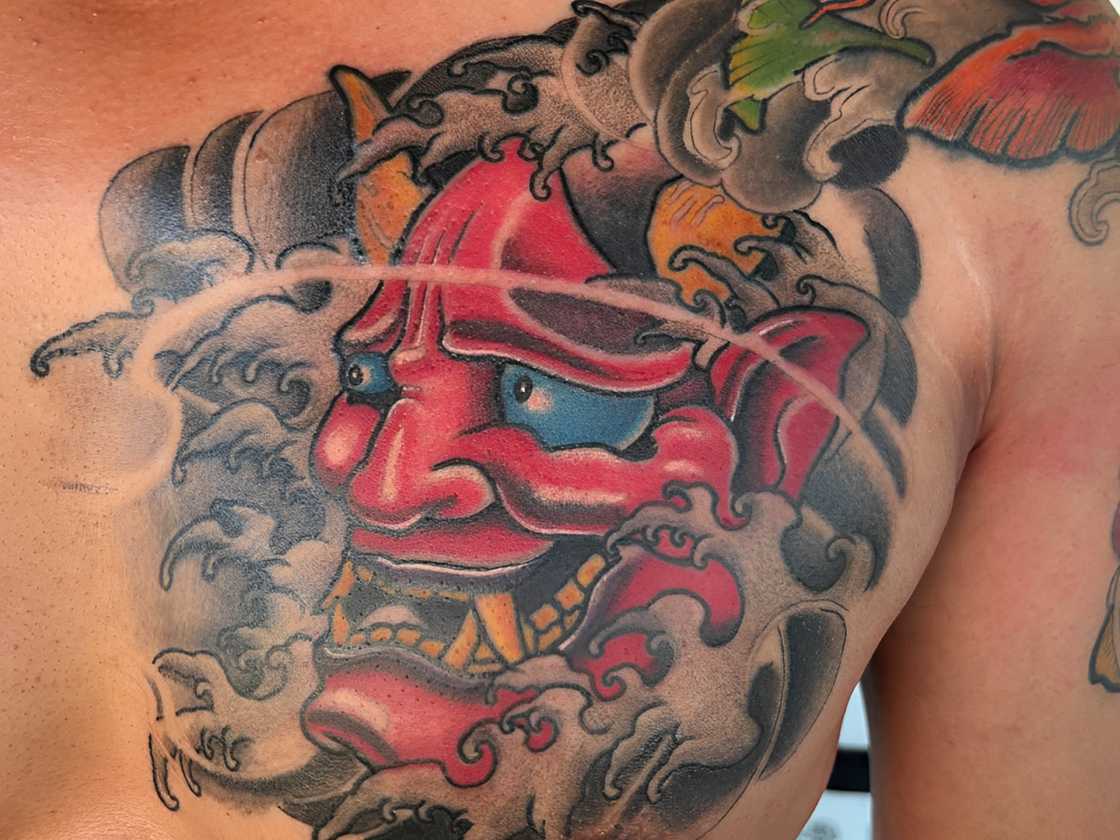
Source: Instagram
In traditional Japanese tattoos, the Oni mask is a potent emblem of protection, strength, and the conflicting sides of human nature. They exemplify the craftsmanship and symbolism inherent in the Japanese tattoo tradition.
Traditional Japanese sleeve tattoos
Traditional Japanese sleeve tattoos are elaborate stories woven into the skin. These bright works of art frequently depict legendary creatures such as dragons, koi fish, cherry blossoms, and waves. Each element communicates a distinct story of power and tenacity.
1. Majestic dragon artwork
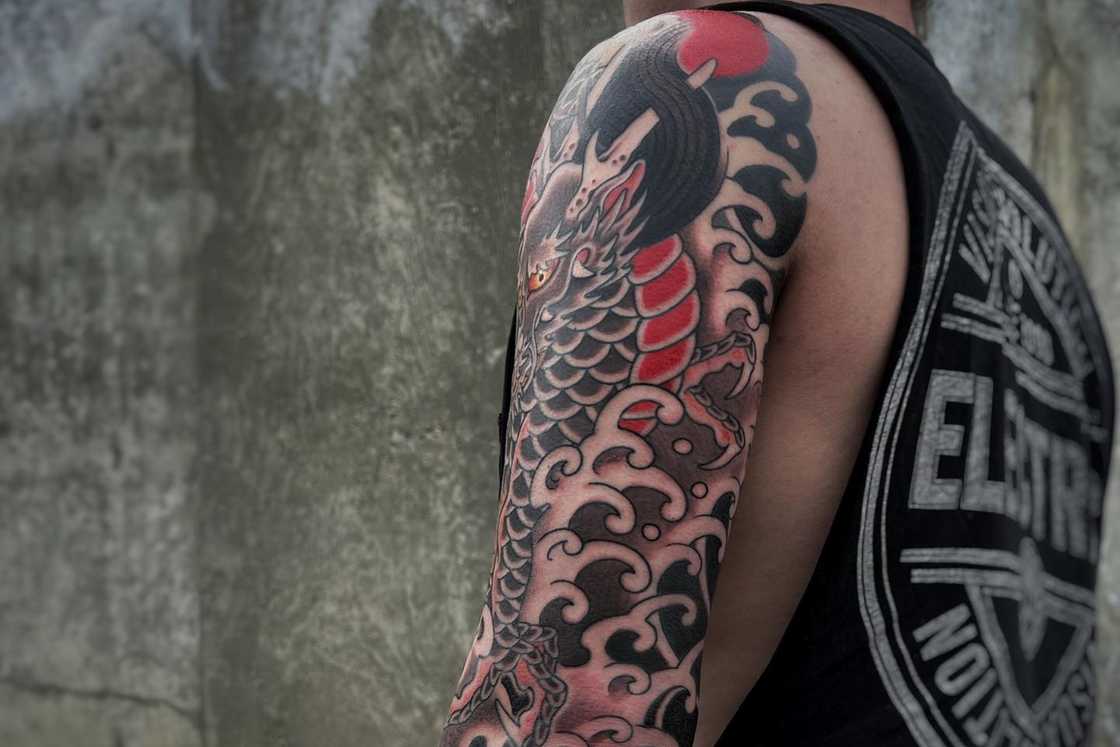
Source: Instagram
A traditional Japanese dragon tattoo is a striking and intriguing symbol that represents strength, wisdom, good fortune, and protection. It is a timeless design with rich cultural significance that can bring beauty and meaning to your body art.
2. Koi fish design
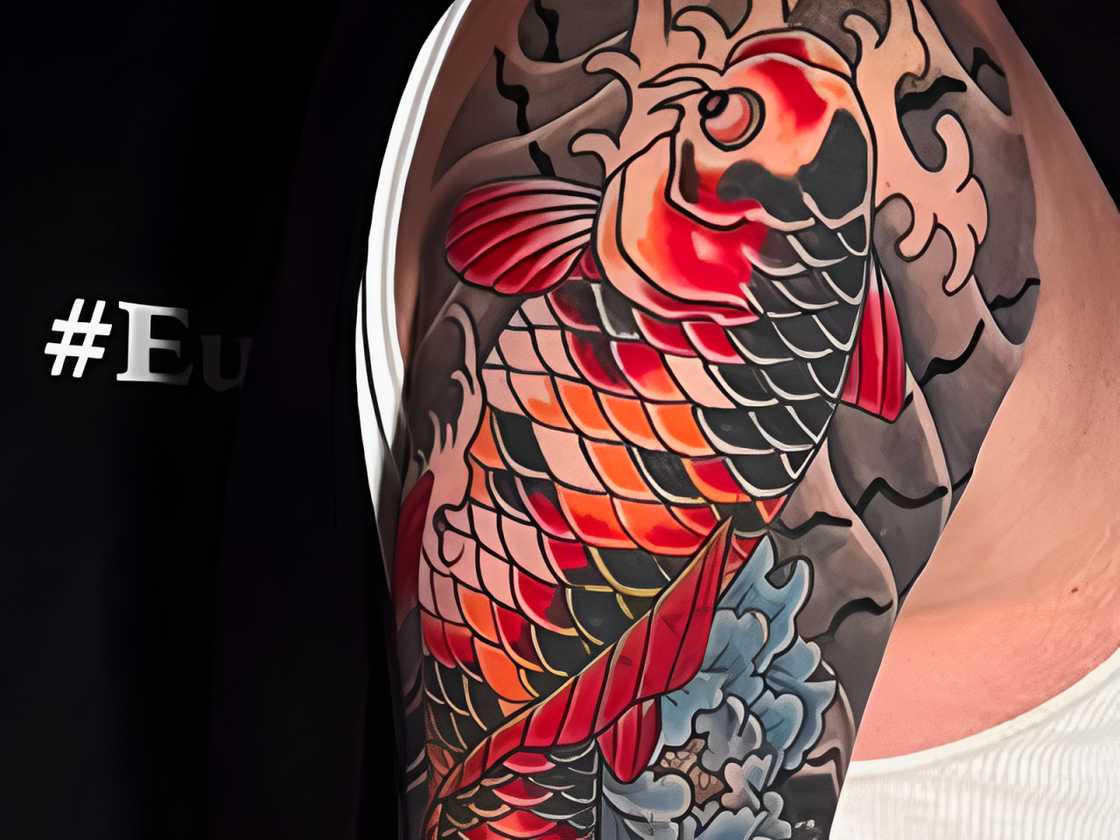
Source: Instagram
Traditional Japanese koi fish tattoos are famous for their bright colours, elaborate designs, and rich symbolism. In Japanese culture, the koi fish symbolises power, endurance, and good fortune.
3. Samurai tattoo
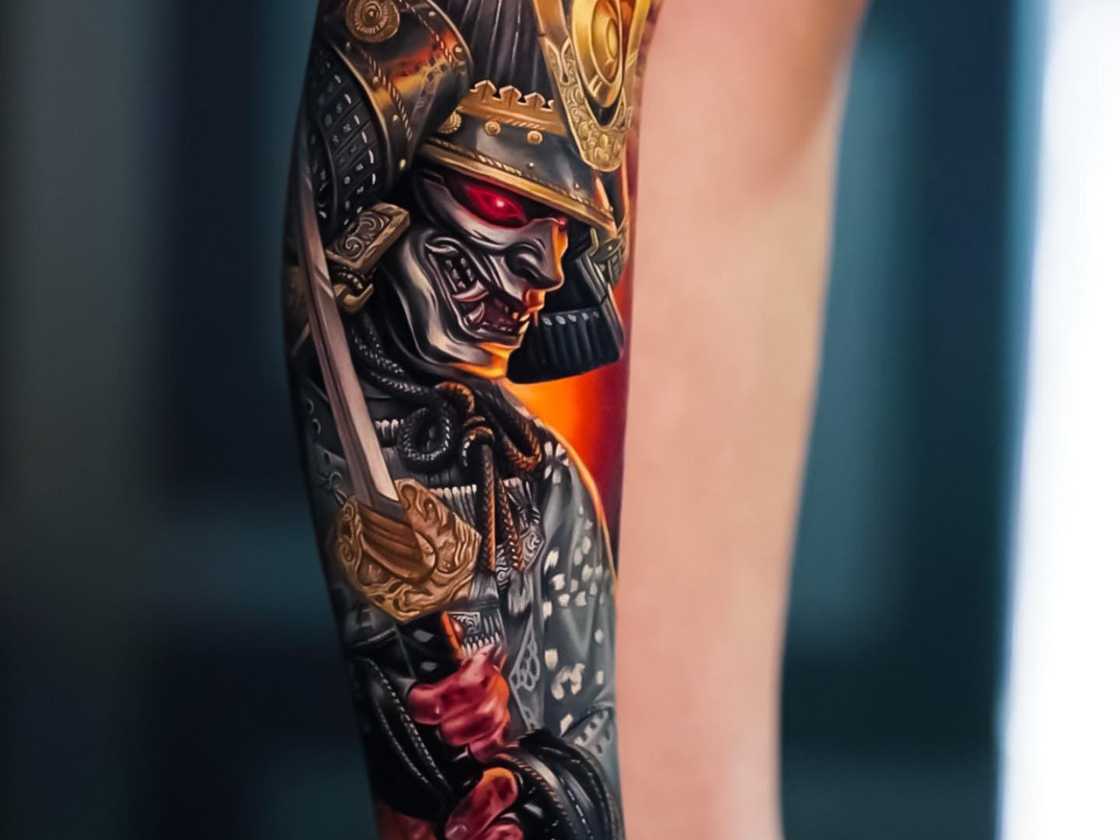
Source: Instagram
Samurai tattoos symbolise strength, devotion, and honour, making them a powerful choice for those drawn to Japanese tradition.
4. Irezumi-inspired sleeve tatt
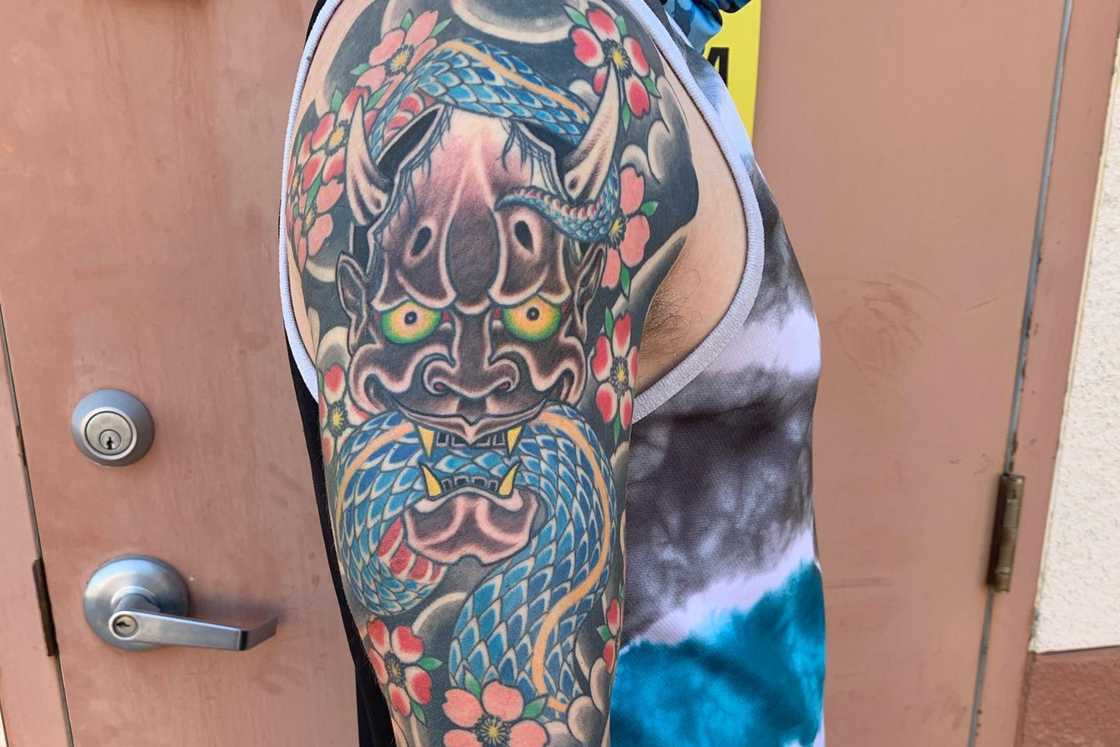
Source: Instagram
Irezumi tattoos use a variety of themes, including legendary creatures like phoenixes, dragons, koi fish, tigers, cherry blossoms, and peonies. Each element has a deep meaning, typically indicating power, courage, prosperity, or personal adventures.
Traditional Japanese back tattoos
Traditional Japanese back tattoos are an intriguing and intricate art style that has historical and cultural importance.
1. Hannya mask representation
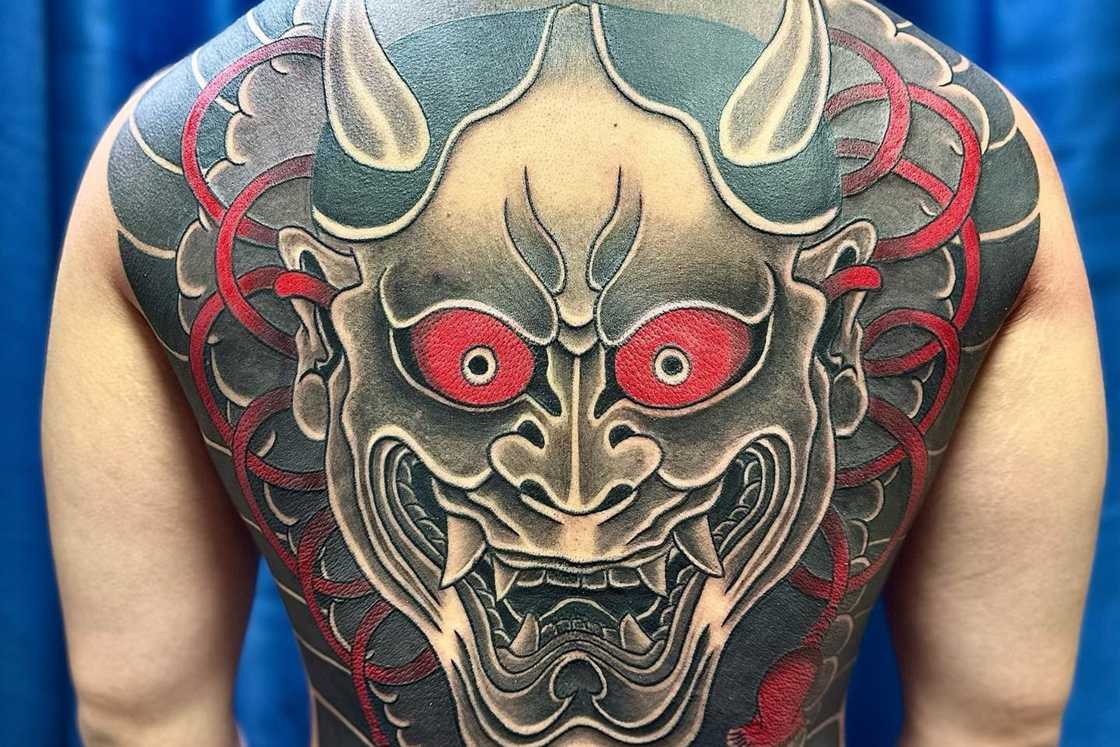
Source: Instagram
The traditional Japanese Hannya mask tattoo depicts a woman converted into a demon as a result of jealousy and fury. In tattoos, the Hannya mask might signify a personal fight with unpleasant emotions, a warning about the repercussions of succumbing to them, or a protective charm against evil spirits.
2. Spider tattoo
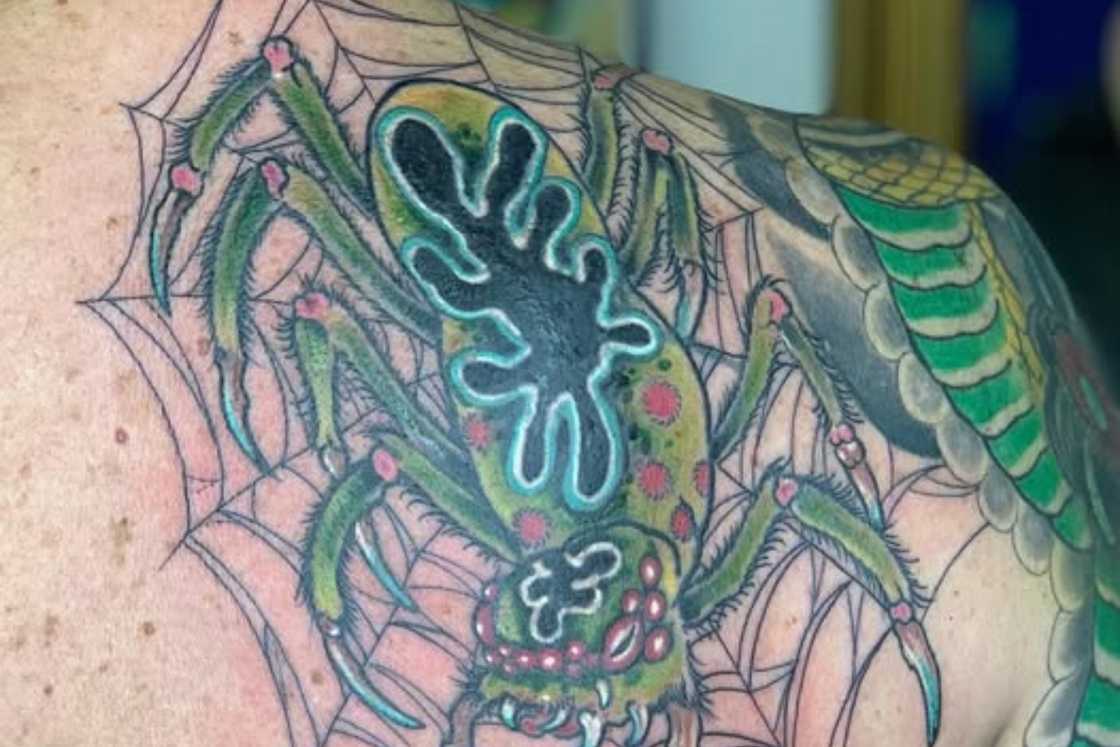
Source: Facebook
Spiders are frequently regarded as symbols of prosperity, protection, and good fortune. They also symbolise the complex web of life, death, and rebirth, in addition to feminine vitality and resilience.
3. Elephant art
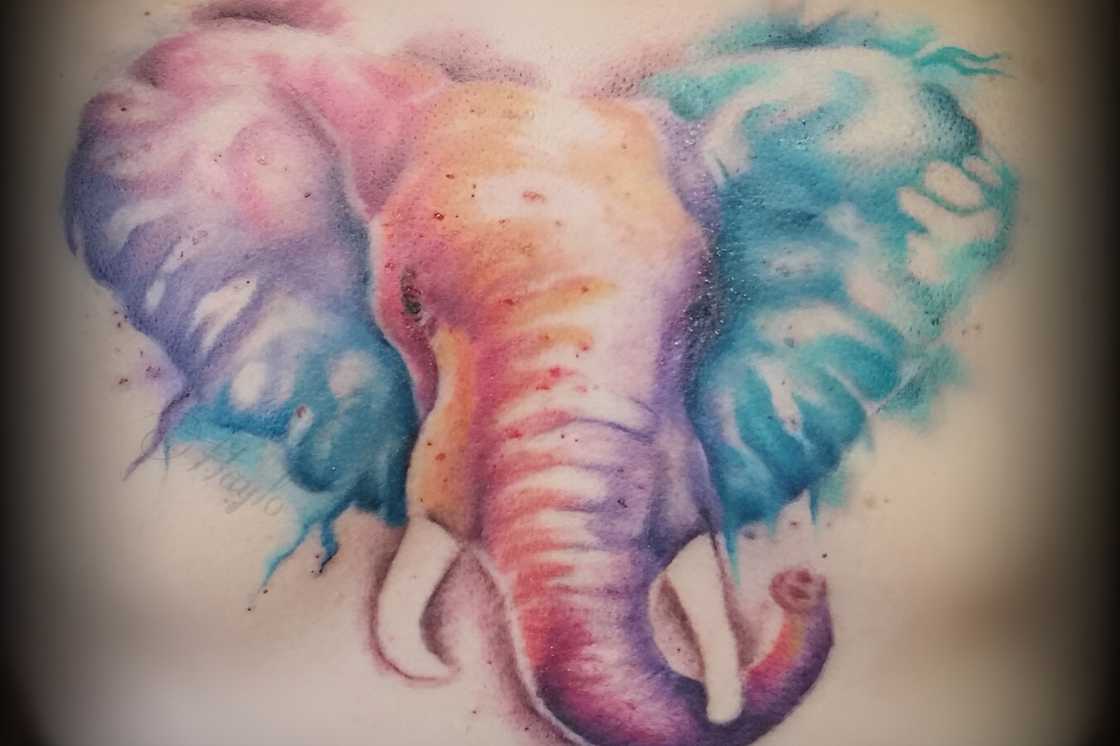
Source: Instagram
Elephants frequently symbolise wisdom, strength, and good fortune in different Asian civilisations. They may also be connected with deities such as Ganesha, reinforcing their positive meanings.
Traditional Japanese half-sleeve tattoos
Traditional Japanese half-sleeve tattoos are mesmerising pieces of art that cover the shoulder to the elbow and feature intricate motifs firmly entrenched in Japanese culture and mythology.
1. Elegant geisha portrait
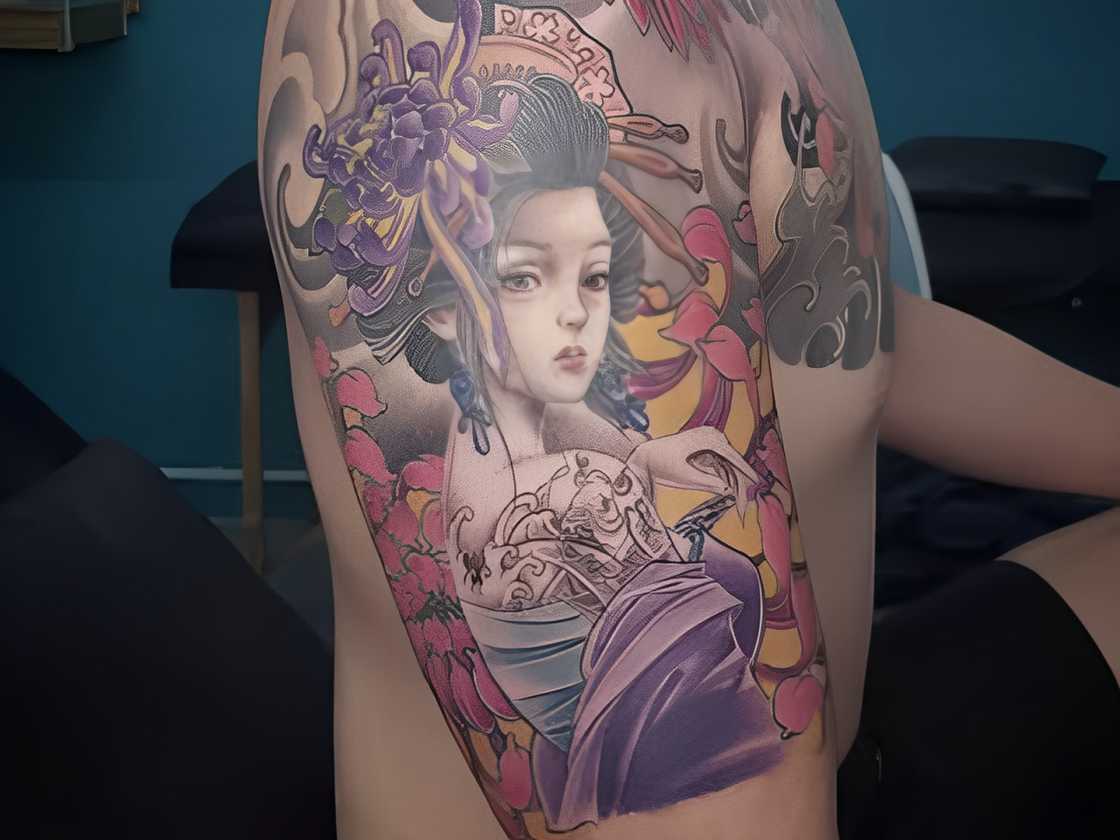
Source: Instagram
Traditional Japanese geisha tattoos are rich in meaning, depicting mystery, beauty, and cultural history. Geishas were highly regarded female entertainers in Japan who were trained in ancient arts such as music and conversation.
2. Phoenix tattoo
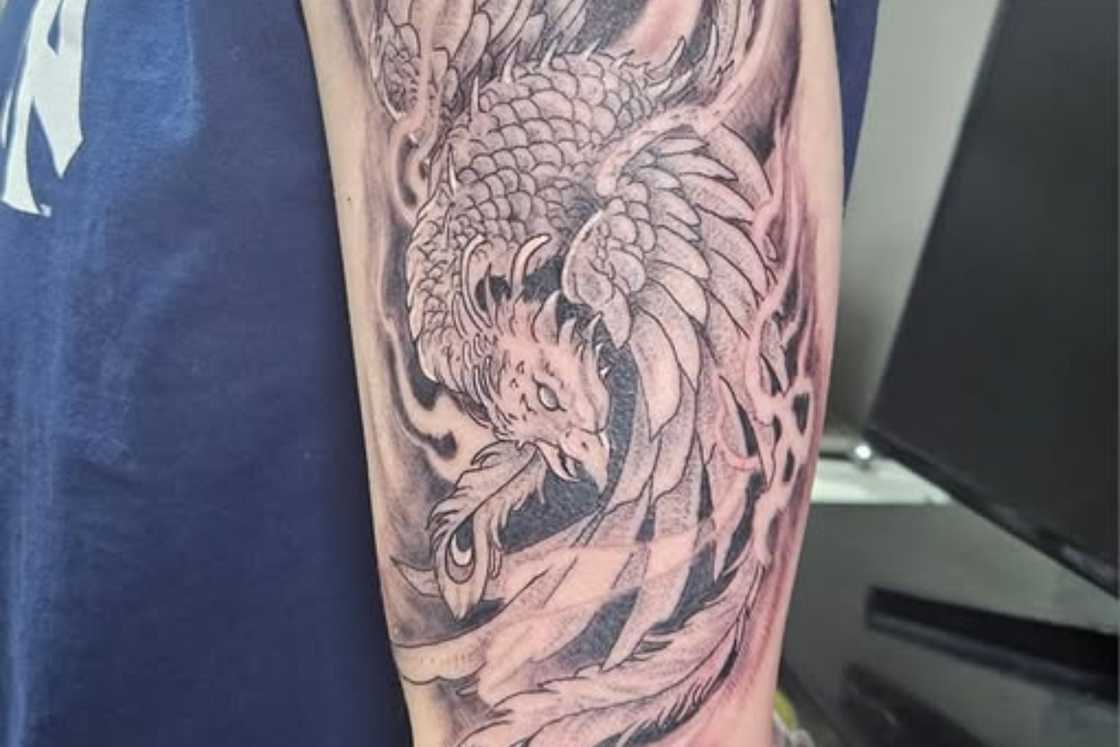
Source: Facebook
The traditional Japanese phoenix tattoo represents rebirth, rejuvenation, and triumph. Inspired by the fabled bird that emerges from the ashes, it symbolises transcending adversity and the cyclical aspect of life. It represents resilience, hope, and the power of transformation.
3. Fierce tiger depiction
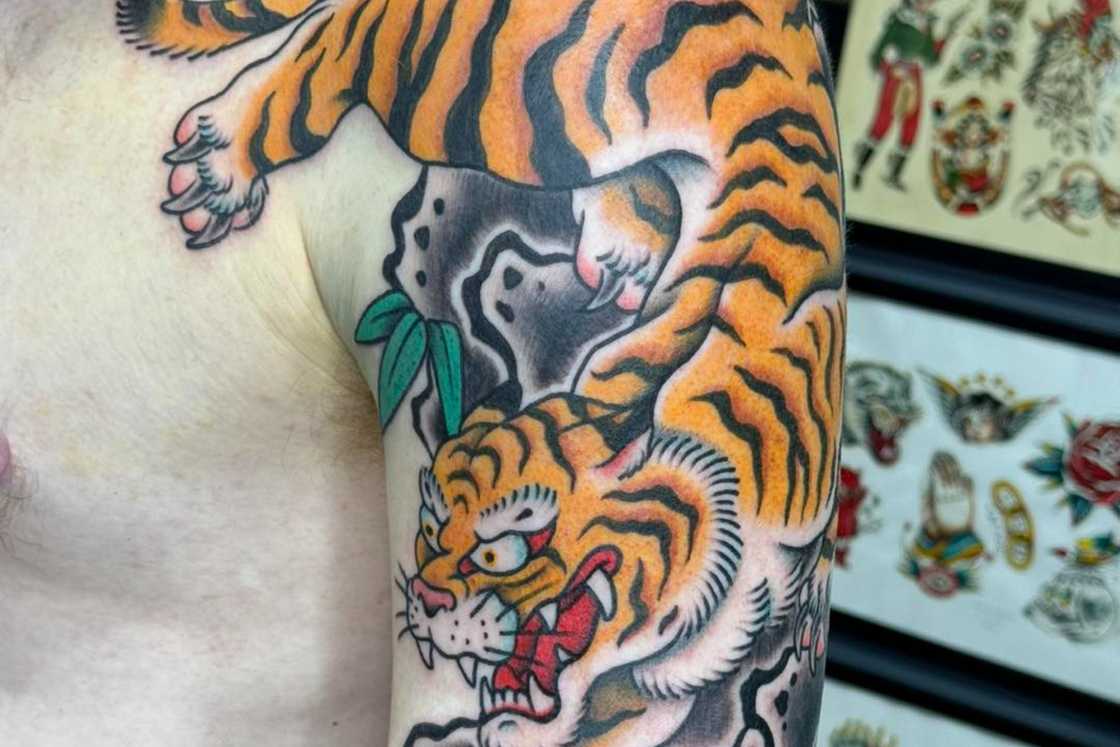
Source: Facebook
Japanese tiger tattoos have significant cultural importance and are highly regarded for their symbolism. Tigers are prominent creatures in Japanese mythology, symbolising courage, strength, and protection.
4. Neo-traditional fusion
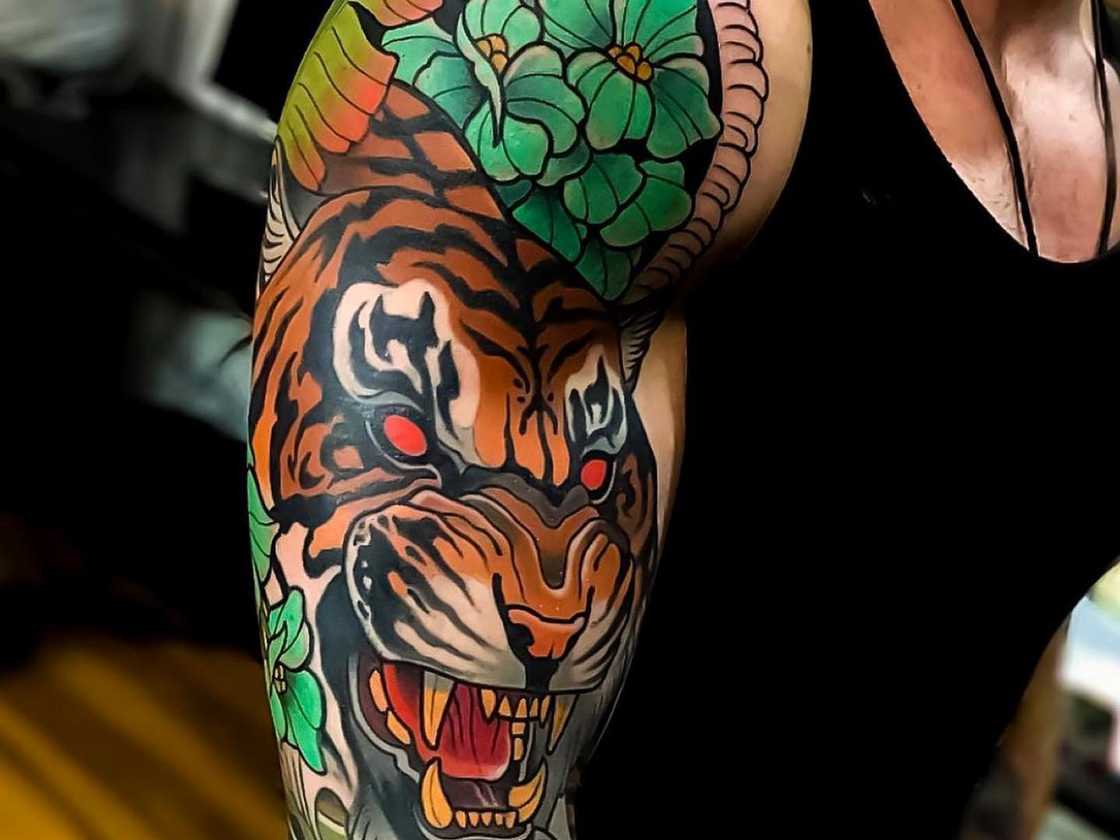
Source: Instagram
Neo-traditional Japanese tattoos are a contemporary version of the traditional Japanese tattoo style, combining traditional themes with modern techniques and aesthetics. They frequently use bold outlines, brilliant colours, and dramatic compositions.
Black and grey traditional Japanese tattoos
Black and grey shading is utilised in traditional Japanese tattoos to add depth and contrast to elaborate designs. Black symbolises mystery, determination, and power, whereas grey can signify balance and impartiality.
1. Crane tattoo
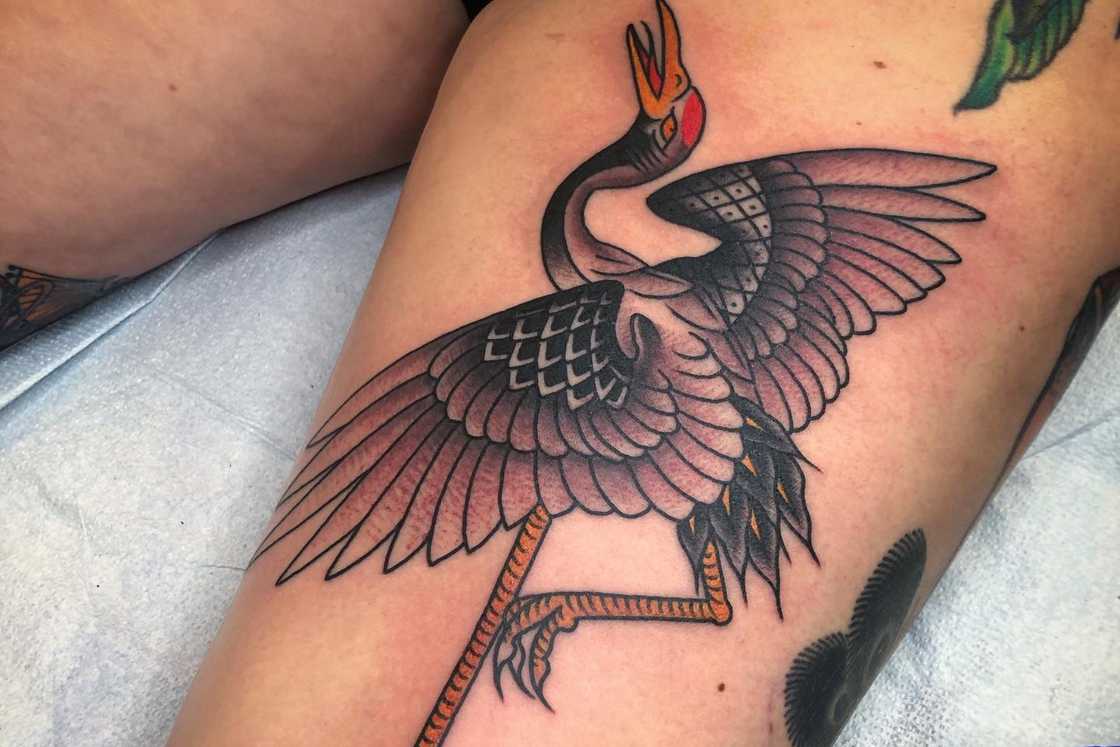
Source: Instagram
The crane is an important emblem of happiness, longevity, and good fortune in traditional Japanese tattooing. These magnificent birds are thought to live for a thousand years, giving them a powerful symbol of a long and fruitful existence.
2. Waves representing life’s flow
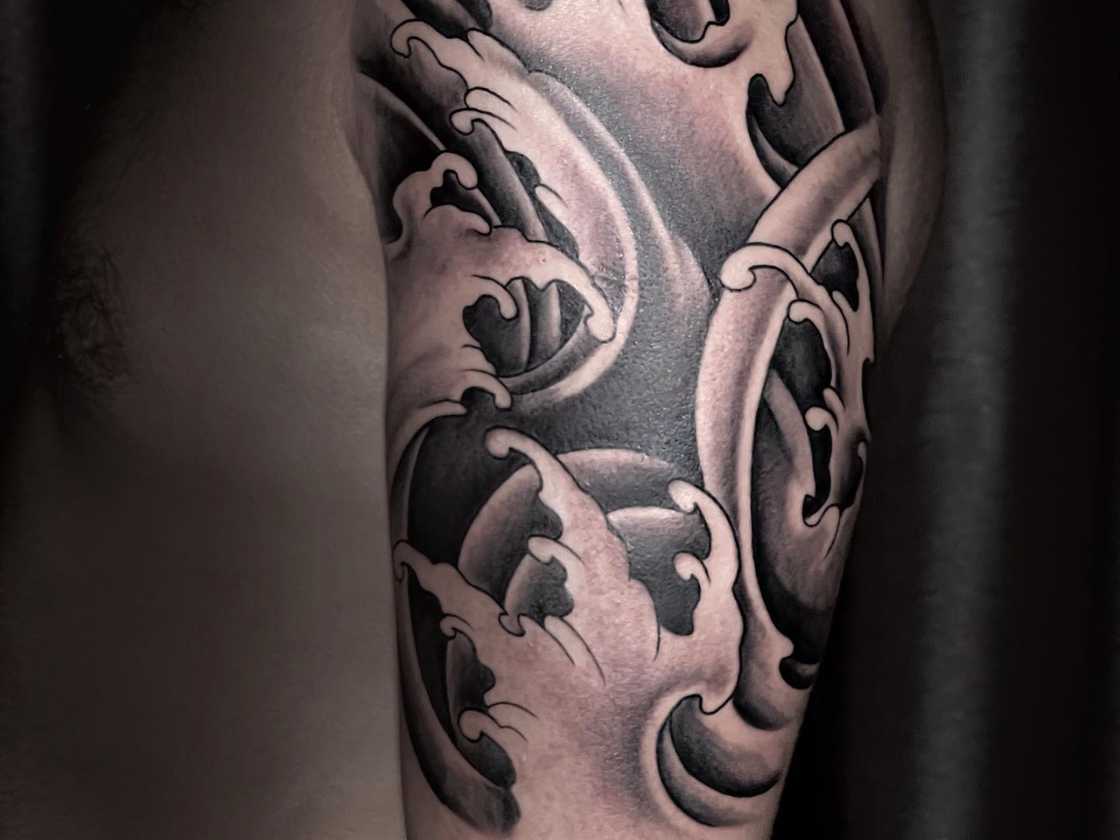
Source: Instagram
Japanese wave tattoos represent strength, perseverance, and the ever-changing nature of life. The tremendous waves symbolise nature's energy, while their ceaseless motion symbolises the fluctuating nature of existence.
3. Cloud around the arm design
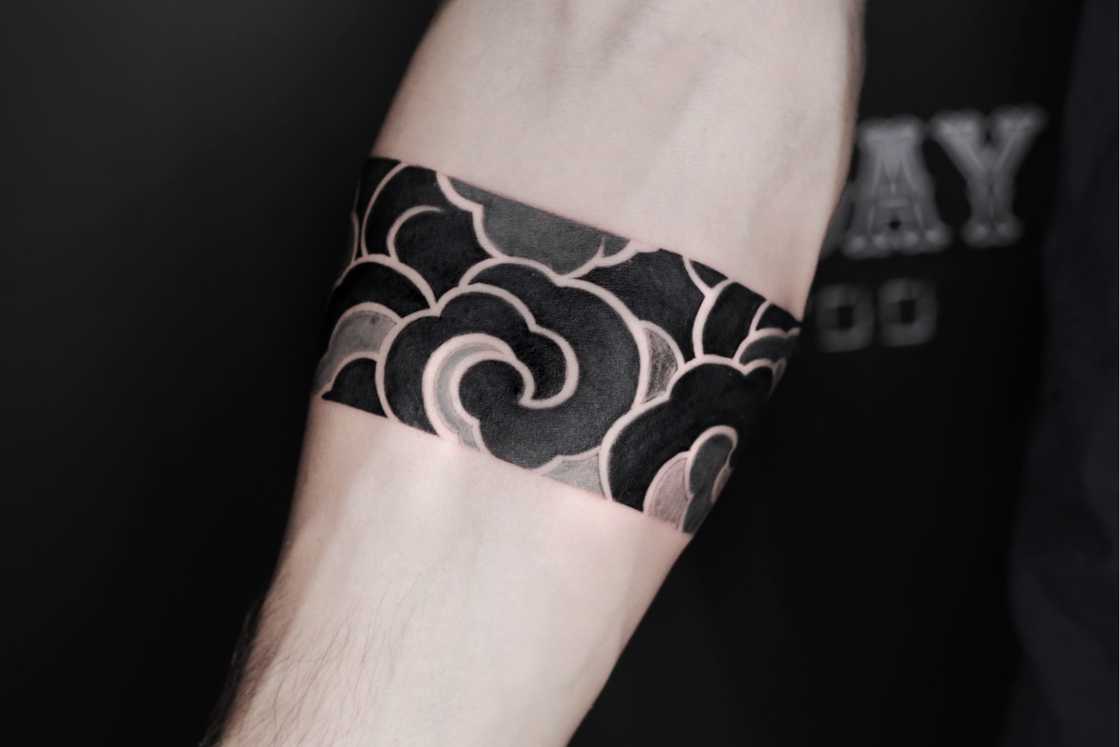
Source: Facebook
Clouds represent metamorphosis, the fleeting nature of existence, and the link between the terrestrial and celestial worlds. These tattoos frequently include swirling, wispy lines that mimic the fluidity and movement of clouds, suggesting evolution and the embrace of life's uncertainties.
Traditional Japanese flower tattoos
Traditional Japanese floral tattoos provide significant cultural and spiritual value. Each flower has a distinct meaning, frequently representing notions such as rebirth, strength, and the transient aspect of life.
1. Japanese lotus tattoo
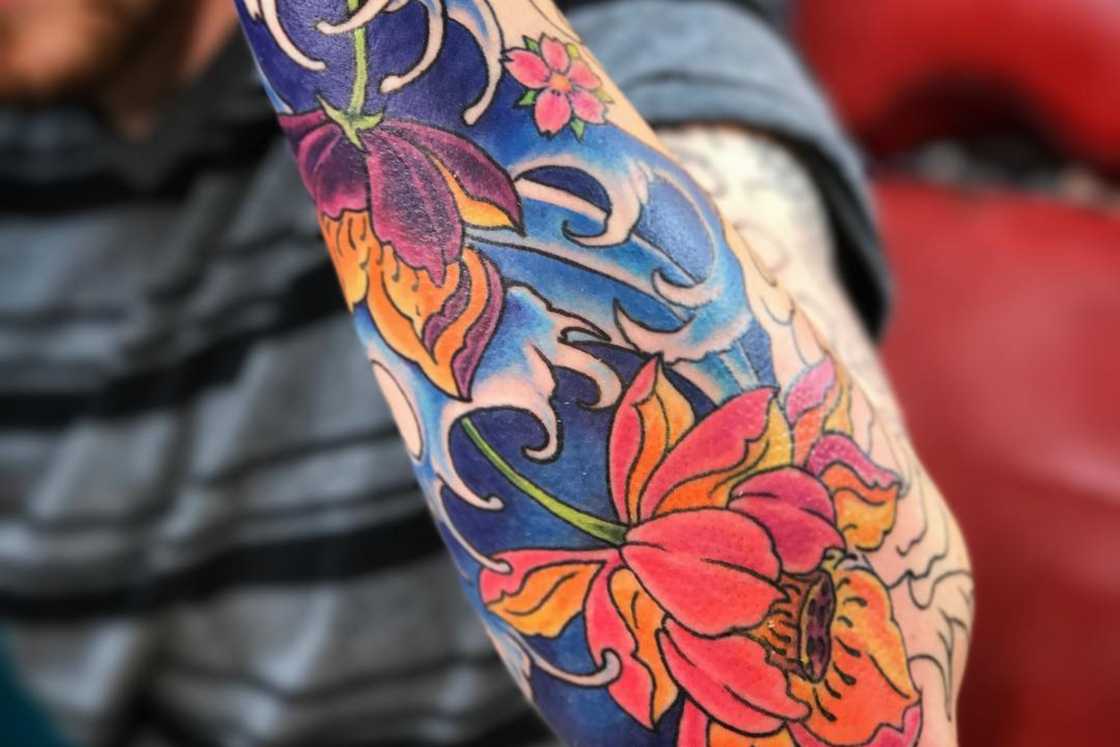
Source: Facebook
The lotus blossom has a significant value in Japanese culture, representing purity, awakening, and rebirth. In Japanese tattoos, the lotus can signify a person's path from adversity to enlightenment, as well as their capacity to conquer hardships.
2. Ccherry blossom tattoo
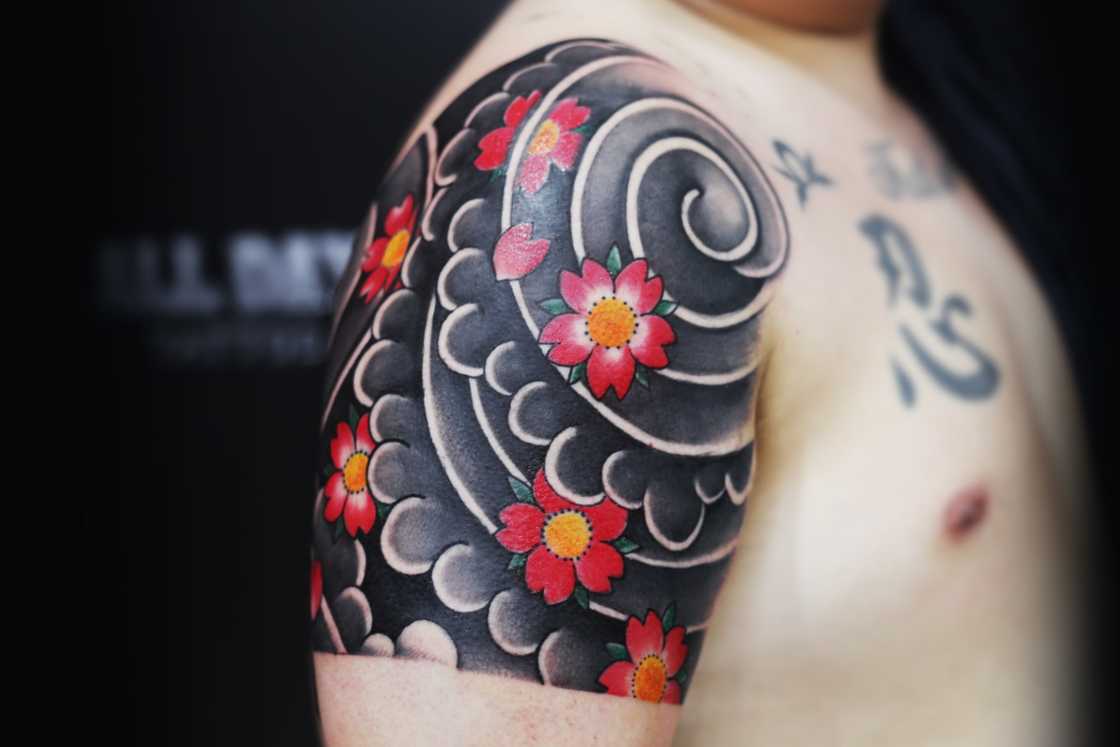
Source: Facebook
Traditional Japanese cherry blossom tattoos are deeply culturally significant in Japan. The cherry blossom is an emblem of life's fragility, as its flowers are beautiful yet fleeting. They symbolise renewal and hope since they blossom in the spring, signalling the beginning of a new season.
3. Chrysanthemum design
Traditional Japanese chrysanthemum body art has a significant cultural significance. Chrysanthemums are Japan's national flower, representing longevity, regeneration, and grandeur.
Traditional Japanese hand tattoos
Traditional Japanese hand tattoos are a stunning example of creativity in a highly exposed location. Because of the limited space, designs are typically smaller and more focused, including components such as a dragonfly, turtle, lotus blossoms, or butterfly.
1. Dragonfly tattoo
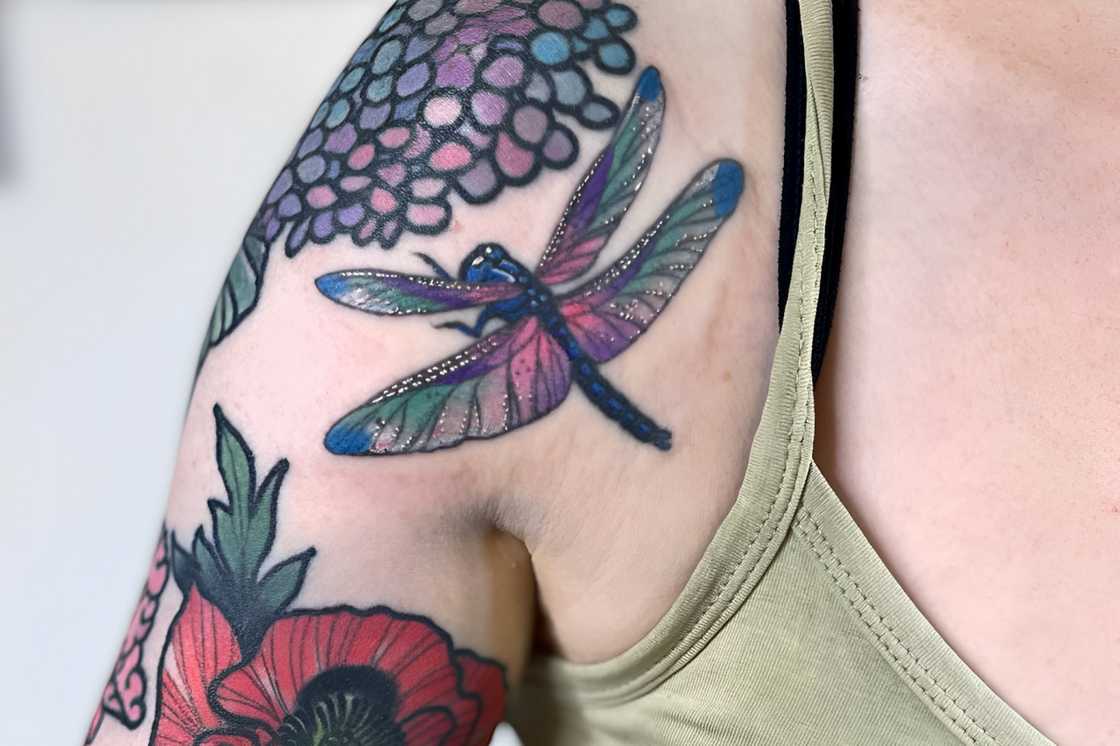
Source: Facebook
The dragonfly, admired for its agility, strength, and triumph in battle, was frequently connected with the samurai. Dragonflies were also considered emblems of good fortune, metamorphosis, and fresh beginnings.
2. Dagger-inspired art
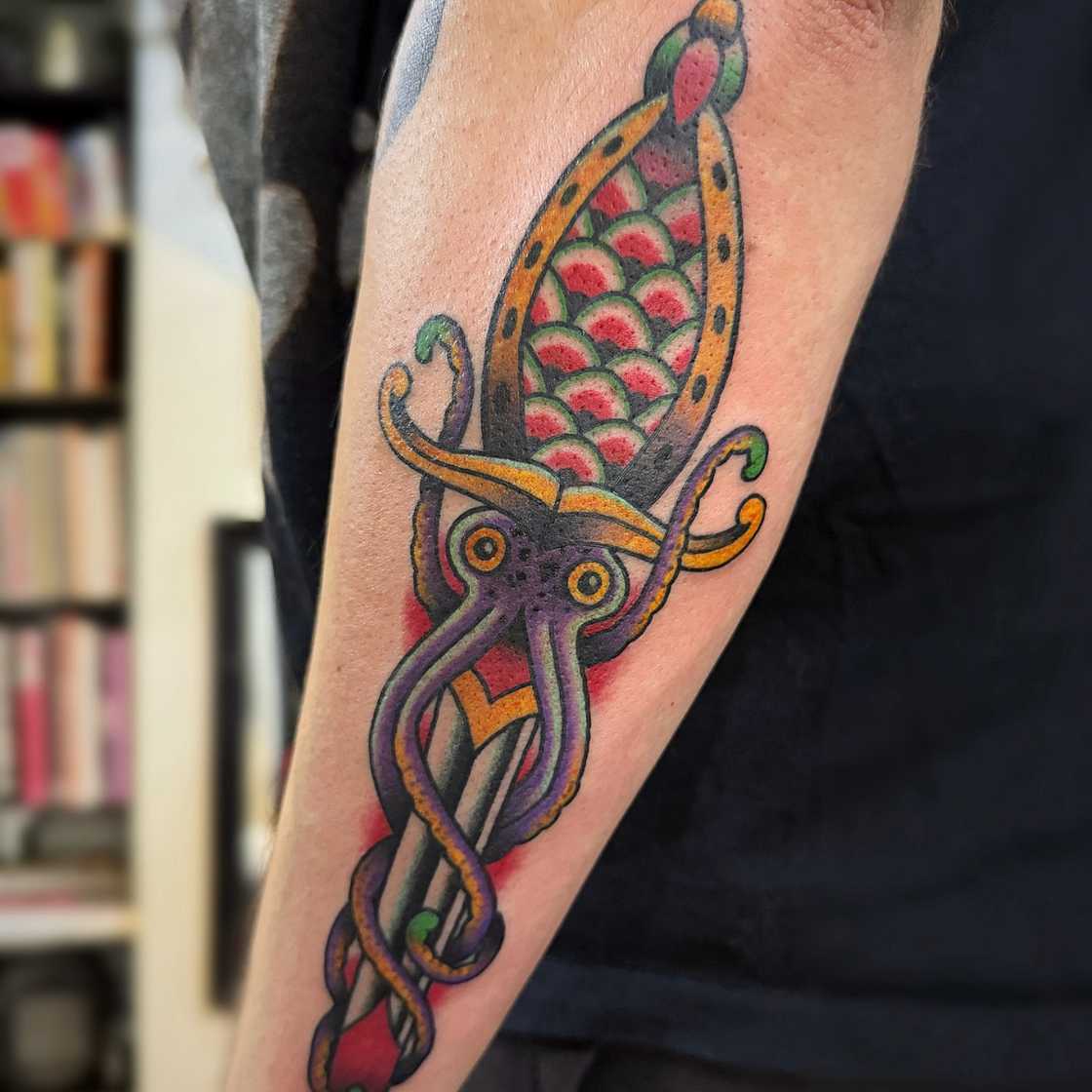
Source: Facebook
A traditional Japanese dagger tattoo symbolises not only the actual sharpness of the blade but also values such as honour, loyalty, and bravery, especially in the face of hardship. The dagger can also represent personal and familial protection, as well as the capacity to overcome hurdles in life.
3. Turtle tattoo
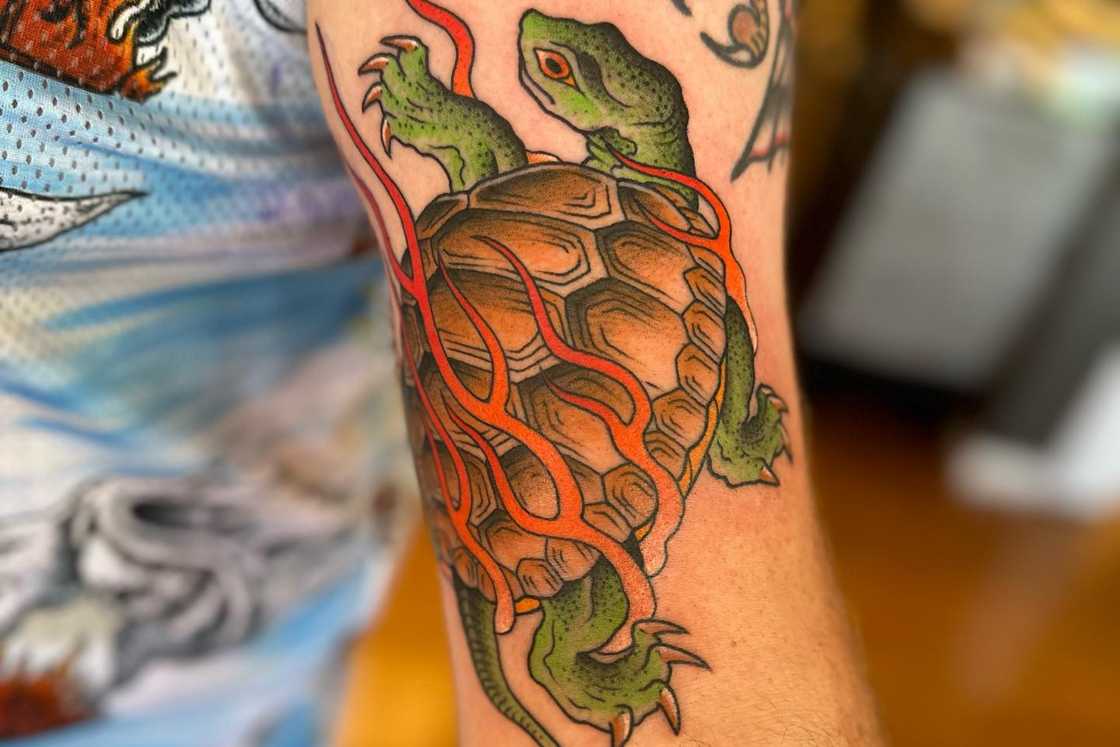
Source: Instagram
Turtles are highly regarded in traditional Japanese society as symbols of durability, wisdom, and perseverance. Their extended life spans and calm, steady pace are linked to a thorough awareness of the world and a patient attitude towards life.
4. Japanese cat tattoo
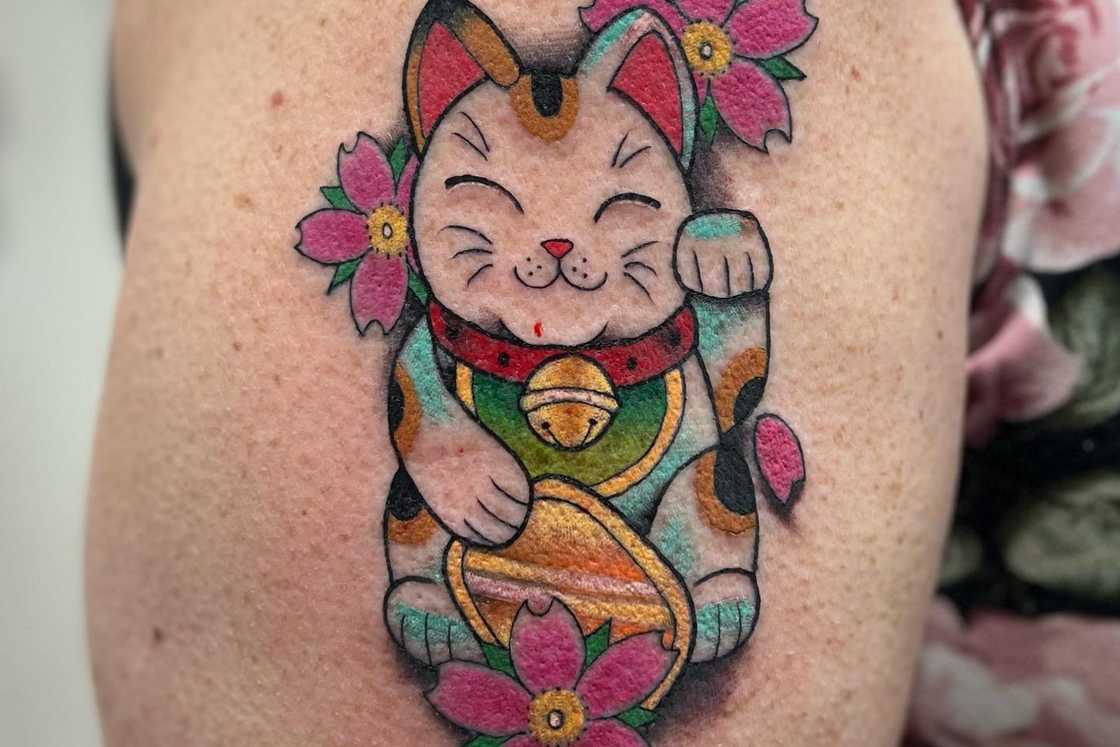
Source: Instagram
Cats are important in traditional Japanese tattooing because they often represent protection, mystery, and good fortune. In Japan, they are said to bring good luck, particularly to single women.
5. Japanese bamboo tattoo
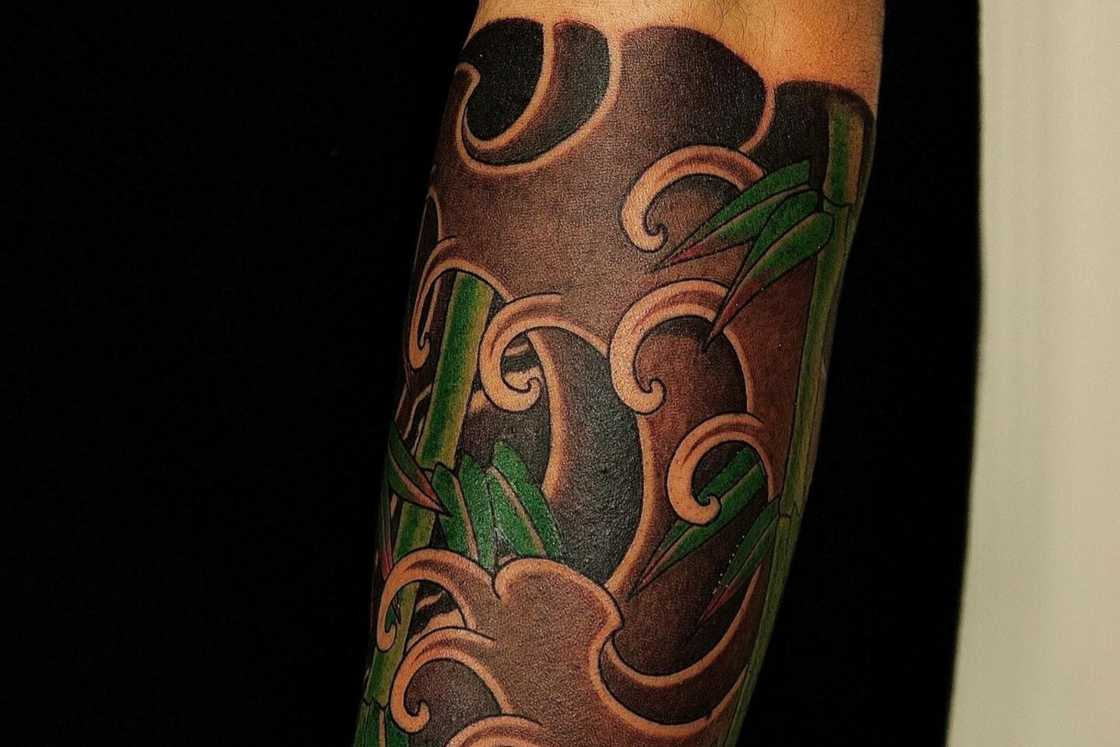
Source: Instagram
Bamboo is a classic Japanese tattoo design that represents strength, suppleness, and durability. The bamboo stem bends but does not break, demonstrating adaptability and resilience in the face of hardship.
6. Butterfly tattoo
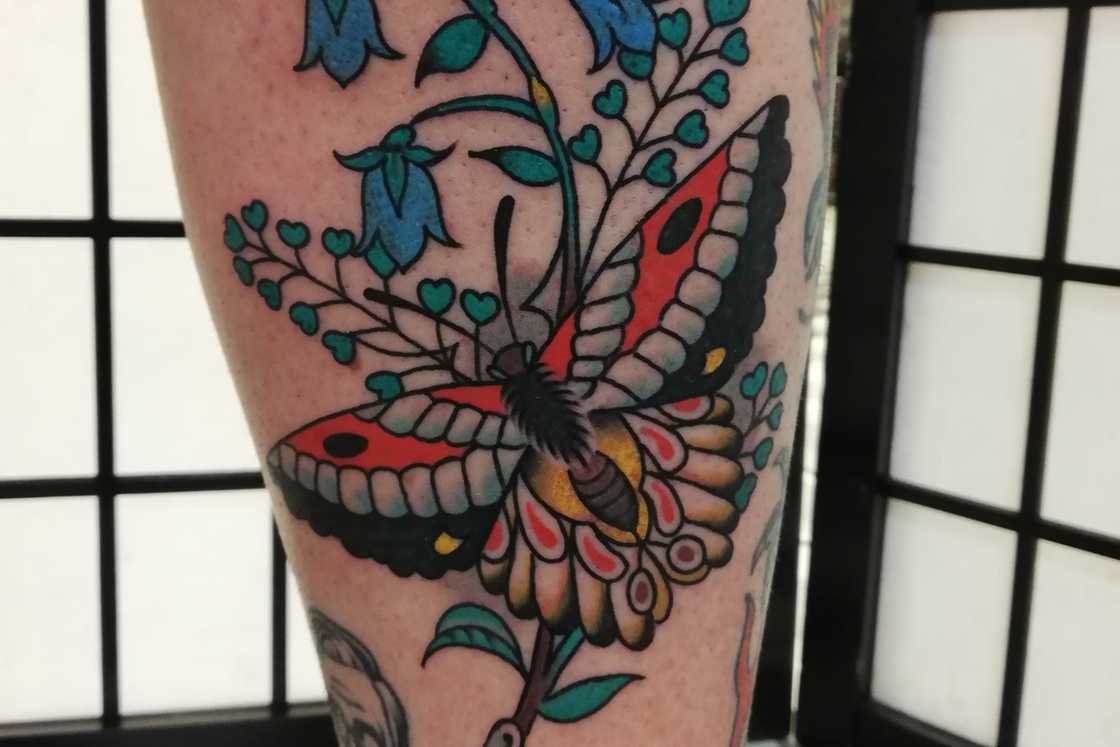
Source: Facebook
In Japan, butterflies are significant symbols of metamorphosis, splendour, and the soul. It depicts the transition from one stage of life to another, similar to how a caterpillar transforms into a butterfly. In addition, butterflies are connected with femininity, elegance, and joy.
7. Japanese daruma doll tattoo
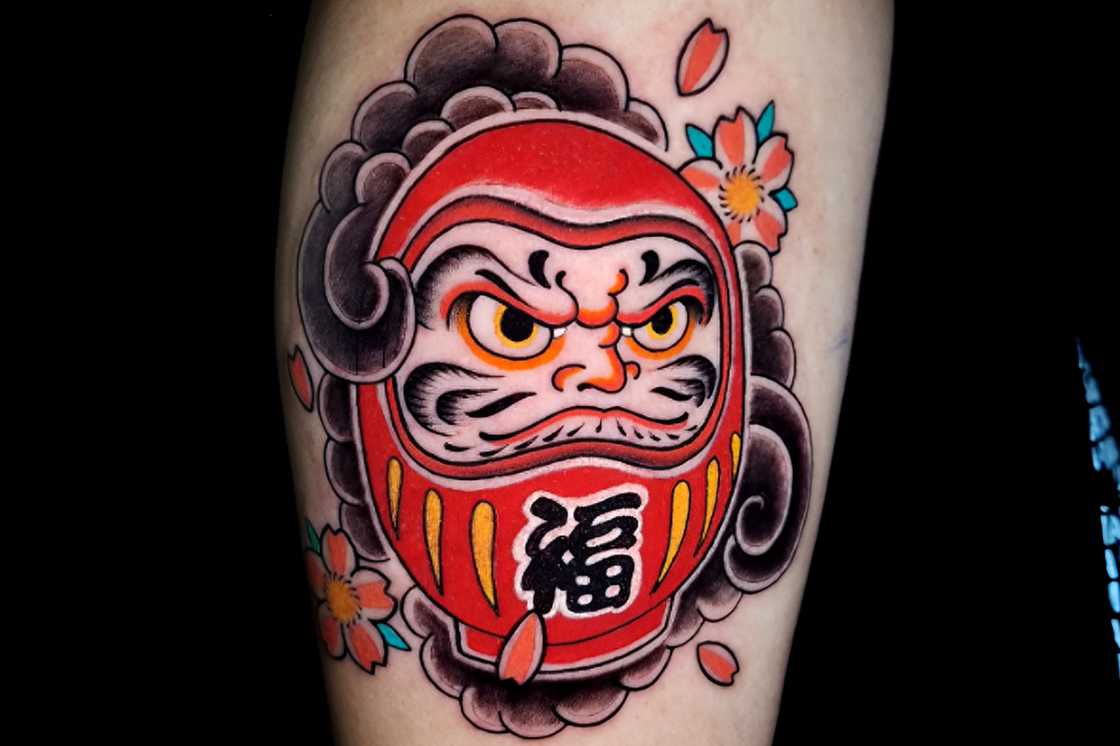
Source: Instagram
Daruma dolls are traditional Japanese dolls inspired by Bodhidharma, the originator of Zen Buddhism. They are seen as emblems of endurance and good fortune, making them an effective means of encouragement. Daruma dolls are commonly used to track progress towards a goal.
What is the most iconic Japanese tattoo?
The Japanese dragon is the most recognisable Japanese tattoo design. Dragons are symbols of strength, wisdom, good fortune, and protection.
Traditional Japanese tattoos, with their rich history and deep meaning, provide a one-of-a-kind and powerful means of self-expression. Beyond their remarkable appearance, these mythology, folklore, and philosophy-inspired designs hold significant meaning as well as unique significance for the person wearing them.
Yen.com.gh released a fantastic list of cherry blossom tattoo design ideas. Cherry blossom tattoos are popular in body art, representing beauty and rejuvenation with eternal elegance.
A cherry blossom tattoo is a great option for anyone looking to add colour and playfulness to their body art. Pairing your cherry tattoo with complementary designs might help it stand out and tell a deeper story. Check out the article for the best cherry blossom tattoo ideas.
Source: YEN.com.gh

